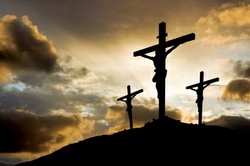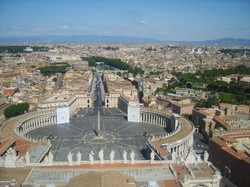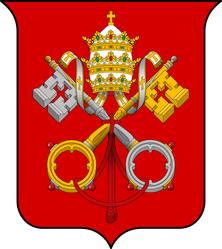The name Brigid derives from ancient Indo-European terms for the shining one. Not much is known of this spiritual power house of feminine energy, but in the corpus of legends that have arisen around her she is a sacred figure with many characteristics of a pagan goddess adopted into the Christian saintly pantheon, but Irish tradition is adamant that she was a real character whose home in Ireland was in the province of Leinster in county Kildare. Some suggest that she was a senior druidess who converted to the Christian faith, bringing many of her druids with her. But sadly documentary sources on her life are scarce. But the tales of Brigid, known as Mary of the Gael,enrich the hagiographical heritage of Ireland.

Mary of the Gael: St Brigid of Kildare
by frankbeswick
Christian saint, pre-Christian goddess, druidess, a woman of great spiritual strength. There is much to discuss about this outstanding spiritual personage.
The Mystery of Brigid
Saints from the early Middle Ages are hard to study,for there are legend making processes at work augmenting the saint's story, and moreover some minor saints are minor pagan deities whose mythos has been Christianised. But what do we make of Brigid of Kildare? There was definitely a pagan goddess called Brigid, a deity whose name in ancient Indo-European means the shining one. She was a much loved deity concerned with feminine matters, such as childbirth,hearth and home. There was nothing warlike about Brigid (also known as Bride in the Hebrides, whose very name derives from Bride.) Across Ireland hundreds of wells are dedicated to Brigid, though in Scotland none are left, as the Protestant reformers stopped them all up. Vandalism!
In pre-Christian times the area of Kildare was sacred to the goddess Brigid, and there was in that location a sacred oak and a fire temple. Oak trees were sacred to the druids, who were well represented there. Interestingly the sacred fire burned throughout the Middle Ages tended first by druidesses and then in the Christian period by nuns, until the iconoclastic Protestant reformers extinguished it at the Reformation. In 1993 a new sacred flame was kindled there on the instigation of the Brigitine nuns. Justice at last!
But was st Brigid just a popular and very pleasant charactered pagan deity preserved in popular culture, after all little is known of her life? There is a strong Irish tradition that she was a real person. There is one incident that suggests that she was historic, which is when the church had to explain why she was ordained a bishop. As abbess of Kildare she had the status of bishop, but the story goes that she was accidentally ordained as bishop by mistake. Poppycock! The Irish were ordaining women until the seventh century, totally against the orders of Rome, which they politely ignored. The Celtic cultures accepted the sacredness of women and were happy to give women religious authority.
One possible solution to the mystery of Brigid is that she was a senior druidess at Klldare who converted to Chtristianity taking a company of druids with her. Brigid may not have been her original name, but as the senior druidess serving the goddess Brigid she had been renamed Brigid and when she converted she carried the name Brigid with her. This explains the persistence of the sacred fire at Kildare. As senior druidess she had been responsible for the enduring flame, so when her community converted she took the custom with her and turned it into the service of the Christian God.
In Rome the sacred flame had been tended by vestal virgins, so it is likely that the Irish custom required virgins to tend the fire, as both Roman Celtic cultures had Indo-european roots. For this reason the flame at Kildare was tended by nuns, and Brigid herself, her hagiography insists, was permanently committed to virginity, as were her nuns.
Interestingly, the story of Saint Brigid contains very little about her meeting St Patrick, so it seems that the traditions of Brigid are a tradition cycle independent of the great apostle of Ireland.
Myths of Brigid
Mythology reckons little about time, so the myth of Brigid, who as a very feminine goddess took an interest in midwifery, has her reckoned the midwife who birthed Jesus.That she lived about five hundred years after Jesus birth is irrelevant. The Hebridean version of the myth makes her a servant at the inn in Bethlehem who was told not to admit more guests, when an exhausted Joseph and Mary arrive. Unable to succour them she gives the Holy Family her cup of water and loaf, but when she returns indoors the loaf has been replaced and the cup replenished. Then a bright light radiates from the stable and on hurrying to see she is in time to act as midwife at Jesus' birth. She puts him to her breast and suckles him
Her feastday is February the first a day venerated by Christians and pagans alike, for in the pagan ritual year it is Imbolc, a day that celebrates the rejuvenation of life in the womb (bolc, belly) of the Earth in the Spring time.
Of great importance in the story of Brigid is her generosity to the poor and needy. Cogitosus, her seventh century biographer, stated that at the monastic city of Kildare Brigid never turned away a needy person. Often, as a young girl she was excessively generous, acting without permission, as her exasperated druid father complained to the king of Leinster when she gave his jewelled sword to a beggar. Legend has it that her father was going to sell her as a slave to the king because of her spontaneous generosity, but the king had the insight to refuse the sale, seeing what a druid had foreseen when she was still in the womb, that there was something special about the child.
One legend of Brigid's generosity is that at a feast there was not enough beer for the poor, so Brigid miraculously turned water into beer so that all could celebrate. And good beer it was too. Sadly this is only a legend.
She was very strict about preserving her virginity, which she had vowed to God when she became a nun. As she was a beautiful woman her family received offers of marriage for her, but she turned them down. She did not avoid male company, but did not, so legend says, look a man in the face.
Legend says that she died at Glastonbury while on pilgrimage to Jerusalem, but I think this is a monastic legend concocted to boost the status of Glastonbury.
The Significance of Brigid
Brigid's combination of profound holiness with a feminine character has led to her being acclaimed Mary of the Gael, the comparison being with Mary the mother of Jesus. Along with Patrick and Columba she is the joint patron saint of Ireland, and is regarded as an icon of sacred femininity. She comes over as a strong personality who does not always seek permission. Like all good Christians she obeyed the word of God, but she had a will of her own. But unlike very many people, whose will serves their egos, her strong will seems to have served the poor and needy. Furthermore, while she dwelt in an isle scarred with tribal conflicts she seems to have kept her monastery out of them. Her strong personality and will seem to have been deployed in the service of peace.
Popular religious culture associates her with feminine matters. Her cultus links her strongly with childbirth and the role of midwife. In Gaelic cultures midwives or women acting in the role used to pray for her assistance. She was known in Hebridean culture as the woman on her knees. This is not a reference to her praying, though undoubtedly she was a woman of prayer, but to the fact that in Hebridean culture the woman in labour sat propped against the stone doorpost of the house while the midwife knelt to take the baby.
Brigid is also associated with food. She was invoked before harvest on Irish farms, with the hope of safe and productive reaping. Both men and women invoked her and it was a custom to hang a small cross made of straw in the household. This cross comes in many forms and is generally small. The association with harvest reveals that she has an association with bread making. . St Brigid was always associated with dairy activities, particularly milking. This was inevitable in a society based on a pastoral economy.
The link between the cultus of Brigid and pastoral farming links up to another characteristic of Celtic saints: they were said to have a way with animals, and this was said of Brigid. Furthermore, typically of a peace-loving, feminine character she has a strong association with healing. Nursing the sick would be an activity that is linked to the sainted abbess of Kildare.
It is clear that the cultus of St Brigid of Kildare has absorbed material from the cultus of the pagan Brigid of the Tuatha de Danaan, the ancient goddess of Ireland and parts of Britain. [Part of Northern England was known as Brigantia in pre-Roman times.] But St Brigid was a real character, and what was absorbed from the pagan source was compatible with Christian values. What we can take from Brigid is a vision of femininity that is strong willed but gentle and kind.
You might also like
Who was JesusTo understand Jesus you must realize that he was a mystery that theology trie...
Ministry in the church:women bishopsThe long awaited decision to have women bishops is major progress.
Leo the FourteenthThe new pope was welcomed by the faithful, but there are questions facing him...



 Pilgrimage. A review16 days ago
Pilgrimage. A review16 days ago
 Leo the Fourteenthon 05/09/2025
Leo the Fourteenthon 05/09/2025
 The Melsonby Hoardon 03/25/2025
The Melsonby Hoardon 03/25/2025



Comments
The whole convent has a role in managing the flame, asth3re isstrength in numbers.
Thank you for your comment below, in answer to my previous observation and question.
That's such good news. How glorious it is indeed!
Might it be known how that sacred flame musters continuously, because managed by one or two or more nuns?
Yes. How glorious.
The second paragraph to the first subheading, The mystery of Brigid, advises us that "In 1993 a new sacred flame was kindled there on the instigation of the Brigitine nuns. Justice at last!"
Is that sacred flame kindled non-stop since 1993?
Much evidence has been lost.
The Early Middle ages predates canonization. Minor saints did not always pass the rigorous canonization process. did she? If so evidence would have been required, and it must be held somewhere.
Nothing is written, but they probably followed traditions handed down over years
Nuns died it all, I think.
The computer crashed before I could complete my comment concerning those who care for fire temples and sacred flames.
Would the Brigintine nuns follow their own traditions for guarding something sacred? Or would they respect in some cases how things were done until the Middle Ages oppression, repression, suppression of such fire temples and sacred flames?
The organization behind tending sacred flames boggles my mind.
Do we have any information as to who tended sacred flames from where and for how long? For instance, might one be expected to live proximitous to the sacred flame? Might one have lifetime commitments to keeping sacred flames going?